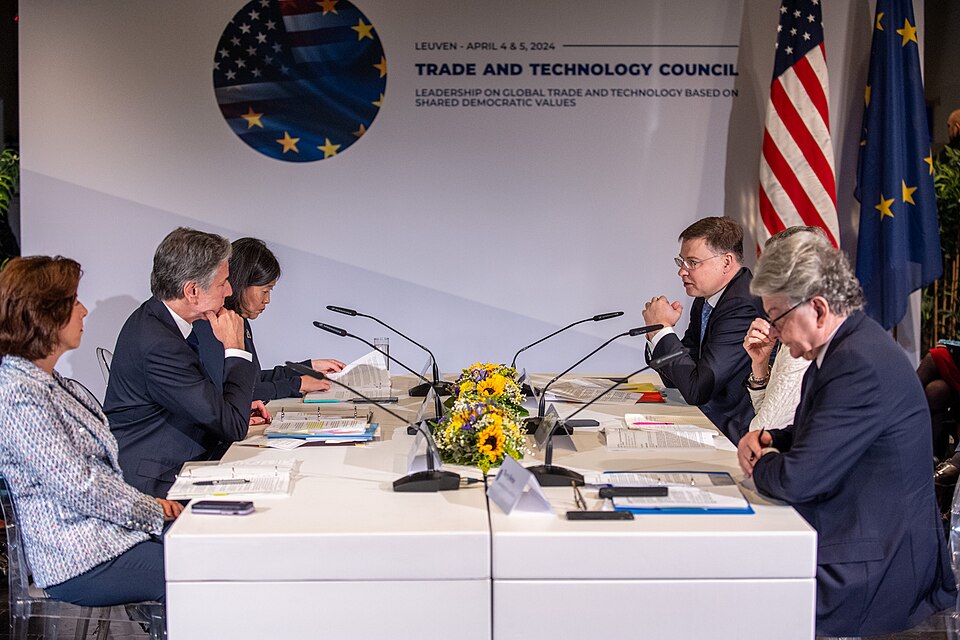US and EU Formalize Trade Agreement to Mitigate Tariff Disputes

On July 28, 2025, the United States and the European Union reached a pivotal framework trade agreement aimed at averting a potential trade war that could have significant implications for global commerce. The deal, negotiated during a meeting between U.S. President Donald Trump and European Commission President Ursula von der Leyen at Trump's golf course in Turnberry, Scotland, imposes a 15 percent import tariff on a majority of EU goods entering the United States.
This agreement comes in the wake of escalating tensions and previous tariff impositions that threatened to escalate into a full-blown trade conflict between two of the world's largest economic powers, which together account for nearly one-third of global trade. According to a statement by President Trump, this deal is a “necessary step” to ensure fair trade practices while fostering a cooperative relationship with European allies.
The 15 percent tariff, although perceived as less ambitious than an ideal zero-for-zero accord, is considered a compromise by many in Europe. European Commission President von der Leyen emphasized the importance of this agreement, stating, "This framework allows us to reset our trade relationship and move forward collaboratively in addressing mutual concerns."
The historical context of U.S.-EU trade relations reveals a complex landscape shaped by both cooperation and conflict. In the years leading up to this agreement, tariffs had been imposed on various products, leading to retaliatory measures and heightened trade barriers. For instance, in 2018, the Trump administration levied tariffs on steel and aluminum imports from the EU, prompting counter-tariffs from European nations on U.S. goods such as bourbon and motorcycles.
Current analyses suggest that this newly established tariff framework, while still burdensome, could stabilize trade relations in the short term. Dr. Emily Thompson, Professor of International Relations at Stanford University, noted, "While the 15 percent tariff may seem like a step backward from the zero-for-zero goal, it represents a critical move toward de-escalating tensions that have characterized U.S.-EU trade interactions in recent years."
Industry leaders have expressed mixed reactions to the agreement. John Anderson, CEO of Global Trade Solutions, stated, "Any tariff is a setback for free trade; however, this agreement could mitigate more severe disruptions. Businesses thrive on predictability, and this framework offers that to some extent."
Economists are cautiously optimistic about the implications of this deal. According to a report by the World Bank, the agreement could lead to a modest increase in trade flows between the U.S. and the EU, potentially boosting economic growth in both regions. The report, published in June 2025, emphasized that reducing trade barriers is essential for economic recovery post-pandemic.
However, some experts warn that the agreement's effectiveness may be limited by underlying issues related to regulatory standards and non-tariff barriers, which have historically complicated U.S.-EU trade relations. Dr. Sarah Johnson, a trade policy expert at the Brookings Institution, stated, "Unless both sides engage in deeper regulatory harmonization, the benefits of this tariff reduction may be undermined by lingering non-tariff barriers."
The international perspective on this agreement is also noteworthy. Analysts from the International Monetary Fund (IMF) have suggested that while this tariff arrangement may stabilize U.S.-EU relations, it does not address broader global trade challenges. The IMF’s April 2025 report highlighted concerns about rising protectionism worldwide, which could hinder overall economic recovery.
Looking ahead, the future of U.S.-EU trade relations hinges on the implementation of this framework and the willingness of both parties to engage in further negotiations aimed at reducing barriers. The implications of this agreement extend beyond tariffs; they signal a potential shift in global trade dynamics as nations navigate the complexities of economic interdependence in an increasingly volatile international landscape. As both sides continue to monitor the impacts of this deal, the hope remains that it will open pathways for more comprehensive trade discussions in the future.
In conclusion, the agreement achieved between the U.S. and EU marks a crucial moment in their trade relationship, offering a temporary reprieve from escalating tensions while opening the door for future negotiations. As global trade continues to evolve, the outcomes of this deal will be closely watched by policymakers and businesses alike, with significant implications for economic stability and growth in both regions.
Advertisement
Tags
Advertisement




